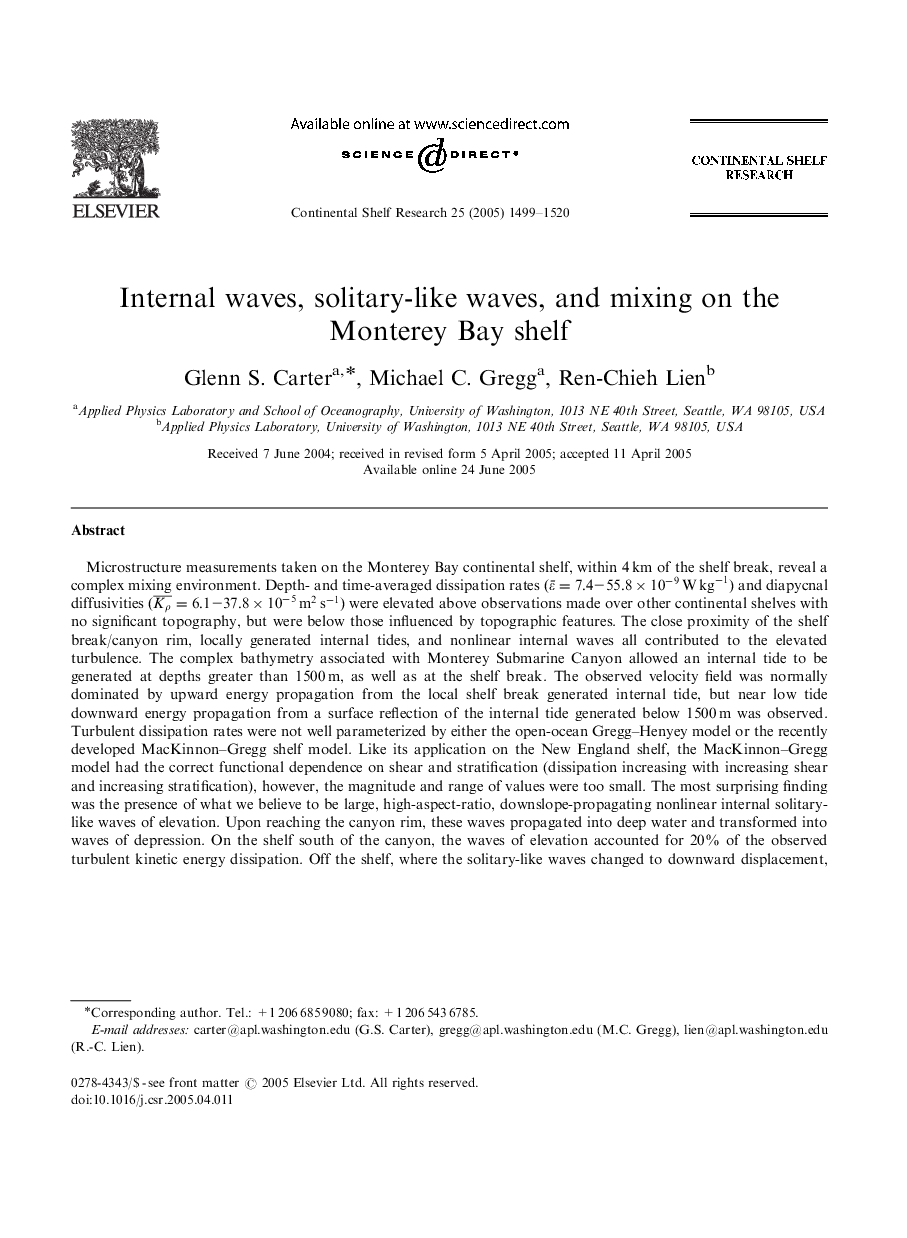| Article ID | Journal | Published Year | Pages | File Type |
|---|---|---|---|---|
| 9478997 | Continental Shelf Research | 2005 | 22 Pages |
Abstract
Microstructure measurements taken on the Monterey Bay continental shelf, within 4 km of the shelf break, reveal a complex mixing environment. Depth- and time-averaged dissipation rates (ε¯=7.4-55.8Ã10-9Wkg-1) and diapycnal diffusivities (Kϯ=6.1-37.8Ã10-5m2s-1) were elevated above observations made over other continental shelves with no significant topography, but were below those influenced by topographic features. The close proximity of the shelf break/canyon rim, locally generated internal tides, and nonlinear internal waves all contributed to the elevated turbulence. The complex bathymetry associated with Monterey Submarine Canyon allowed an internal tide to be generated at depths greater than 1500 m, as well as at the shelf break. The observed velocity field was normally dominated by upward energy propagation from the local shelf break generated internal tide, but near low tide downward energy propagation from a surface reflection of the internal tide generated below 1500 m was observed. Turbulent dissipation rates were not well parameterized by either the open-ocean Gregg-Henyey model or the recently developed MacKinnon-Gregg shelf model. Like its application on the New England shelf, the MacKinnon-Gregg model had the correct functional dependence on shear and stratification (dissipation increasing with increasing shear and increasing stratification), however, the magnitude and range of values were too small. The most surprising finding was the presence of what we believe to be large, high-aspect-ratio, downslope-propagating nonlinear internal solitary-like waves of elevation. Upon reaching the canyon rim, these waves propagated into deep water and transformed into waves of depression. On the shelf south of the canyon, the waves of elevation accounted for 20% of the observed turbulent kinetic energy dissipation. Off the shelf, where the solitary-like waves changed to downward displacement, their average dissipation increased 10-fold to ε¯=2.6Ã10-6Wkg-1, and accounted for nearly half the dissipation in the upper 150 m.
Keywords
Related Topics
Physical Sciences and Engineering
Earth and Planetary Sciences
Geology
Authors
Glenn S. Carter, Michael C. Gregg, Ren-Chieh Lien,
